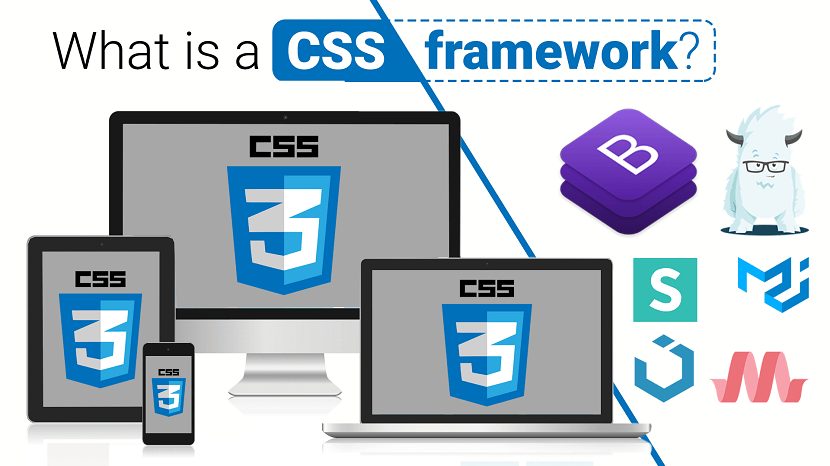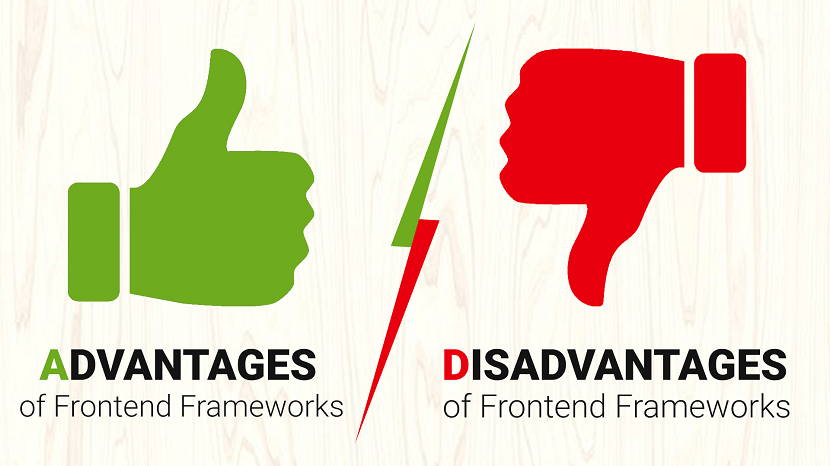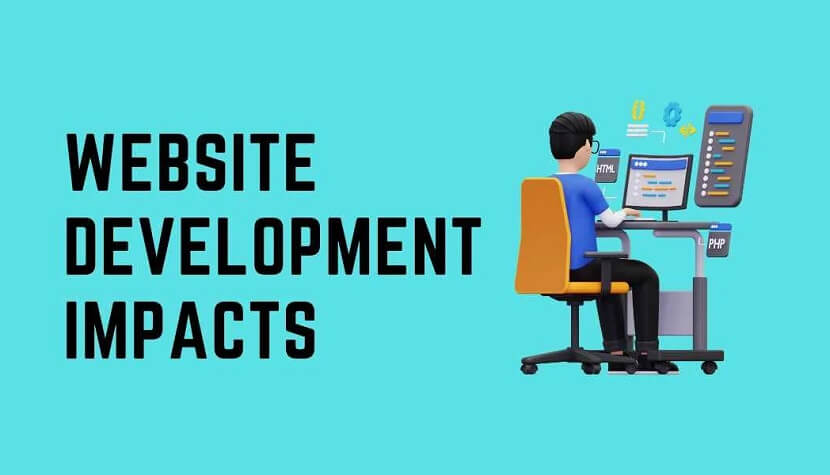What is the best CSS Framework
Last updated on January 19, 2025 by RGB Web Tech

When it comes to being a developer and designer you usually always reach a crossroads of which CSS framework should you use? There are many out there to choose from, but two of the most commonly mentioned ones are Bootstrap and Foundation. In this post, we will be comparing the two CSS frameworks, Bootstrap vs Foundation. Read more below about how using a framework can help speed up and streamline your development and design process.
What is a CSS framework?
Building a website or app from scratch can take a lot of time and development. A CSS framework is commonly used by developers and designers as a tool to speed up the process. A CSS framework, also sometimes referred to as a frontend framework, is essentially a package that is made up of predefined HTML, CSS, and JS which can be used when starting to build out a project. This way you don't have to code from a blank slate every time you need to create a website or web application. In this post, we are specifically focusing on frontend frameworks which usually have to deal with what the visitor actually sees.
A CSS framework usually consists of the following components:
- HTML code which helps make up the structure of the pages.
- Typography styles.
- CSS to visually change how elements appear (a standard set of easy to use classes).
- JavaScript to change dynamic elements such as drop downs, expanding menus, etc.
- Responsive media queries.
- Cross-browser compatibility fixes.
Front-end Frameworks List: If you want to explore more responsive Front-end Frameworks for your upcoming projects than you can Visit Here.
If you found this article helpful, we encourage you to share it on your social media platforms—because sharing is caring! For more information about article submissions on our website, feel free to reach out to us via email.
Send an emailWritten by RGB Web Tech
Latest Technology Trends
Latest technology trends shaping the future, including AI advancements, blockchain innovation, 5G connectivity, IoT integration, and sustainable tech solutions. Explore breakthroughs in quantum computing, cybersecurity, augmented reality, and edge computing. Stay ahead with insights into transformative technologies driving innovation across industries and revolutionizing how we live, work, and connect.
Advantages and Disadvantages of Front-End Frameworks
Last updated on January 19, 2025 by RGB Web Tech

As developers, we often find ourselves looking for ways to be more efficient. For many of us, this means turning to front-end frameworks. Whether it is robust, full-featured frameworks like Bootstrap or Foundation or more foundational frameworks such as Skeleton or Pure, developers are turning to these tools to get a jumpstart on web projects.
Advantages of Using a Front-end Framework
First, let’s take a look at a few Advantages of using a front-end framework.
- Easy and quick to get started.
- They are great for prototyping.
- You can gain momentum by “getting something on the page”.
- They are handy when you are against tight deadlines.
- They provide a solid foundation for responsive design.
- Components of the UI have a base style to be extended (forms, buttons, navbar, etc.)
- The base styles persist throughout.
- They provide a consistent UI design for developers who lack design skills, which is great for things like intranet sites or documentation.
- They provide a base development for non-developers to get something up quick for prototyping or mockups.
Good looking UI, even out-of-the-box
- Components of the UI have a base style to be extended (forms, buttons, menus, etc.)
- The base styles persist throughout.
- They provide a consistent UI design for developers who lack design skills, which is great for things like intranet sites or documentation.
- They provide a base development for non-developers to get something up quick for prototyping or mockups.
Code is reliable and tested
- Code is widely used, especially open source.
- Cross-browser compatibility is built-in, so you know where it will work.
Help is readily available
- Front-end frameworks are widely used, so answers to common problems are easy to find.
- The documentation is usually thorough.
- Free and professional themes and templates may be available.
Disadvantages of Using a Front-end Framework
While development frameworks have been gaining in popularity over the past few years, not all frameworks are created equal and often a front-end framework is not the right tool for the job. Here are a few disadvantages I have found to using them:
They can be too opinionated
Although they are easy to get started, they can require more time down the road to add features and customizations. You might find yourself fighting the base styles with overrides (wasting all that precious time you saved) to get the desired results. This can also lead you to write code that does not evolve gracefully as the project needs change.
Note: Some of these risks can be mitigated by selecting a framework which is more flexible or closely resembles your project. I would advise testing out different frameworks, so you have a better understanding of the advantages and limitations of these tools when a new project comes along.
You’re not learning how to code
It is easy to fall into the trap of only learning the framework and not learning how to develop. You often miss out on valuable experience with the underlying technology. If you are not already an expert, it is important to understand the code which powers the framework. This knowledge will make life a lot easier when you run into complex challenges and will make you a better developer overall.
Updates can introduce issues
- Updating may introduce conflicts with your code.
- When it comes to updates, at the mercy of the framework developers. Sure, you can choose not to update, but you then risk falling behind.
Technical debt
- Developers coming onto the project will need to understand the framework in order to contribute.
- “One-size-fits-all” frameworks tend to have a larger footprint and can add unnecessary bloat to your project.
Front-end Frameworks List: If you want to explore more responsive Front-end Frameworks for your upcoming projects than you can Visit Here.
Conclusion: As with most development decisions, the choice to use a framework and which framework to use should be made based on the requirements of a specific project. What may be perfect for a small marketing website, may not be so great for building a highly-customized web portal. With new frameworks popping up frequently, but as developers, it’s still important to be diligent in selecting frameworks that suit our needs and the needs of our clients.
If you found this article helpful, we encourage you to share it on your social media platforms—because sharing is caring! For more information about article submissions on our website, feel free to reach out to us via email.
Send an emailWritten by RGB Web Tech
Latest Technology Trends
Latest technology trends shaping the future, including AI advancements, blockchain innovation, 5G connectivity, IoT integration, and sustainable tech solutions. Explore breakthroughs in quantum computing, cybersecurity, augmented reality, and edge computing. Stay ahead with insights into transformative technologies driving innovation across industries and revolutionizing how we live, work, and connect.
Unlocking Success: How Web Design and Development Impact Your Online Presence
Last updated on January 19, 2025 by RGB Web Tech

In the era of rapid digital advancements, establishing a formidable online footprint becomes imperative for the triumph of any business venture. A meticulously crafted and expertly engineered website can potentially wield a profound impact on the perception of your brand, ultimately ushering you toward the gateway of triumph. Within the confines of this article, we shall delve deep into the realm of web design and development, unraveling its intrinsic capabilities to instill a positive transformation in your virtual presence. Brace yourself as we commence this enthralling odyssey toward attaining boundless success!
The Power of First Impressions
In the realm of your website, initial impressions hold immense significance. Studies have revealed that mere seconds are all visitors take to shape their perception of your site. Hence, it becomes paramount to fashion a design that is visually enchanting and user-friendly, seizing your audience's attention right from the moment they land on your virtual domain.
An aesthetically captivating framework, complemented by alluring imagery and captivating content, possesses the power to leave an indelible mark on your visitors. It conveys a sense of professionalism, credibility, and reliability, all of which are pivotal elements in establishing a robust online presence.
Navigating the User Experience
The success of a website is intricately tied to the user experience (UX) it offers. The seamless flow of navigation, an intuitive interface, and flawless functionality collectively contribute to a positive user experience. It is imperative that visitors can effortlessly find the information they seek, devoid of any sense of confusion or frustration.
The user experience can be considerably improved by adding simple navigation menus, clear call-to-action buttons, and strategically arranged content. By placing utmost importance on user experience during web design and development, you can effectively captivate and retain your audience, minimize bounce rates, and maximize conversions.
Mobile Optimization: A Must-Have
In an era dominated by the ubiquity of smartphones and tablets, optimizing your website for mobile devices is not merely a choice—it has become an absolute necessity. Neglecting the necessity of mobile optimization can seriously harm your online presence because a substantial amount of internet traffic comes from mobile users.
Responsive web design ensures the seamless adaptation of your website to diverse screen sizes and resolutions. It guarantees a consistent and intuitive user experience across a myriad of devices, thereby empowering mobile users to navigate and engage with your digital domain effortlessly. By embracing the essence of mobile optimization, you can extend your reach to a broader audience while concurrently enhancing your search engine rankings.
Leveraging Social Media Integration
Social media has become an inseparable part of our daily lives in our modern interconnected world. Harnessing the power of social media integration in your web design and development endeavors can revolutionize your online presence.
By seamlessly integrating social sharing buttons on your website, you can actively encourage and empower visitors to effortlessly share your valuable content with their extensive networks. Furthermore, real-time social media feeds display allows you to showcase captivating updates and actively engage with your cherished audience. By forging a solid and seamless connection between your website and various social media platforms, you can expand your reach, nurture unwavering brand loyalty, and attract a fresh influx of new followers.
Consider using QR codes as a cutting-edge and creative strategy as well. By strategically incorporating QR codes into your web design, you can provide a quick and convenient way for users to access and share your website or specific content. QR codes act as a bridge between the physical and digital worlds, enabling effortless interaction and expanding the potential for connection with your target audience.
Search Engine Friendliness: Climbing the Ranks
Unleashing triumphant outcomes within the digital landscape necessitates a profound grasp of the indispensability of search engine optimization (SEO). A meticulously optimized website can heighten your visibility in search engine results, propelling organic traffic and magnetizing prospective clientele.
To augment the search engine friendliness of your website, integrate pertinent keywords seamlessly into your content, meta tags, and headings. Skillfully employ appropriate HTML tags, such as H1, H2, and H3, to meticulously structure your content, thereby endowing search engines with a clear comprehension of your website's hierarchical framework. Additionally, craft descriptive and succinct meta descriptions for each page, enthralling users and enticing them to click through to your digital abode fervently. By meticulously implementing these SEO strategies, you can fortify your online presence and unlock the gates to unrivaled success.
Enhancing Loading Speed: Faster Than a Blink
In the contemporary whirlwind of our world, swiftness reigns supreme. Research unequivocally demonstrates that users demand websites to load swiftly within two seconds or less. Any semblance of delay in loading speed can elicit exasperation, urging visitors to forsake your digital abode in favor of a nimbler alternative.
Optimizing your website's loading speed is an imperative measure to avert the potential loss of visitors. Embrace techniques such as image compression, minimizing HTTP requests, and harnessing caching mechanisms, as they wield power to enhance loading times significantly. By according to the importance to speed within your web design and development endeavors, you can seamlessly bestow a browsing experience without hindrance, thereby ensuring the unwavering engagement of your cherished users.
Maximizing Accessibility for All
Web accessibility is a paramount facet of web design and development that must never be disregarded. Ensuring the accessibility of your website to individuals with disabilities resonates not only as an ethical imperative but also as a legal mandate in numerous jurisdictions.
Incorporate proper HTML tags, furnish an alternative text for images, and employ descriptive link texts to facilitate users utilizing screen readers. Deliberate upon color contrast to enhance readability and extend keyboard navigation options to cater to those unable to hire a mouse. By rendering your website accessible to all, you exhibit an unwavering commitment to inclusivity, fostering a positive online presence that reverberates with the utmost integrity.
Conclusion
Realizing unprecedented triumph within the digital realm necessitates acknowledging the profound influence of web design and development on your online presence. According to the paramount importance of factors such as visual allure, user experience, mobile optimization, search engine friendliness, and accessibility, you pave the way for creating a captivating website that magnetizes and enthralls your intended audience. Remember, your website serves as the digital countenance of your brand, and investing in its design and development catalyzes your unparalleled accomplishments in the online sphere.
If you found this article helpful, we encourage you to share it on your social media platforms—because sharing is caring! For more information about article submissions on our website, feel free to reach out to us via email.
Send an emailWritten by RGB Web Tech
Latest Technology Trends
Latest technology trends shaping the future, including AI advancements, blockchain innovation, 5G connectivity, IoT integration, and sustainable tech solutions. Explore breakthroughs in quantum computing, cybersecurity, augmented reality, and edge computing. Stay ahead with insights into transformative technologies driving innovation across industries and revolutionizing how we live, work, and connect.
